Kitchen Countertop Finishes: Which One is Right for You
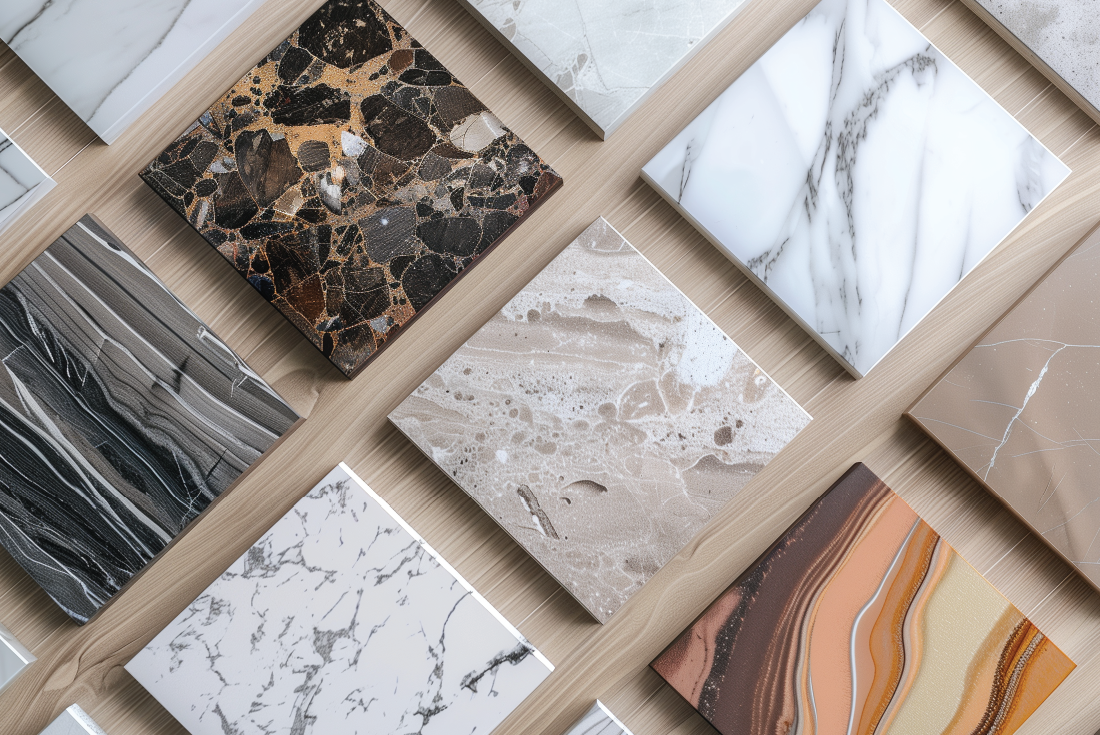
Choosing the perfect countertop finish for your kitchen can be a daunting task. With a multitude of options available, it’s easy to feel overwhelmed. The type of material you select can significantly impact your kitchen’s overall aesthetic and functionality. In this blog post, we’ll explore various kitchen countertop finish options to help you decide the perfect choice for your project.
Kitchen Countertop Finishes: Which One is Right for You
Butcher block and Wood Countertops
I love wood countertops for their warm and inviting feel to any kitchen space. They add a touch of natural beauty and can complement a variety of design styles. Additionally, wood counters can be seamlessly combined with various design styles, looking cohesive in both modern and classic kitchens. Wood surfaces are versatile and easily customized to fit your specific space requirements. We chose to do a walnut butcher block for this Upper East Side project and I could not have loved the results more.
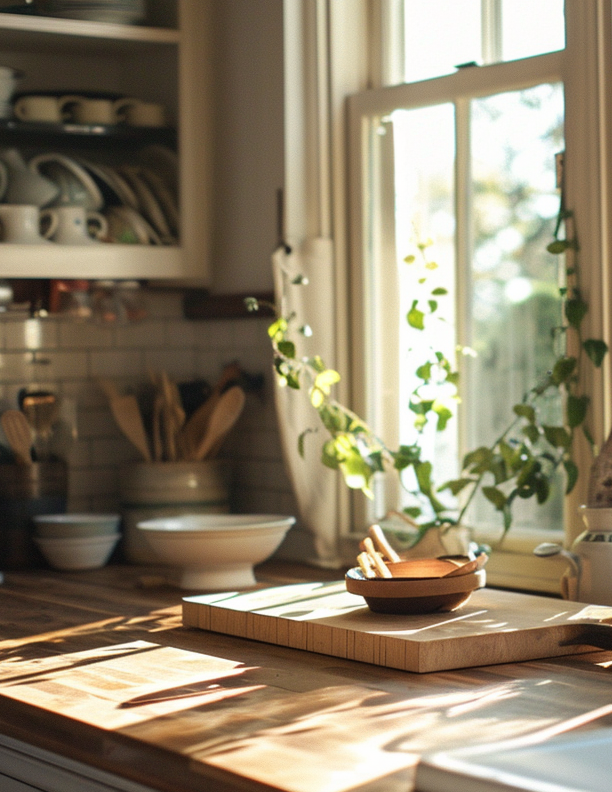
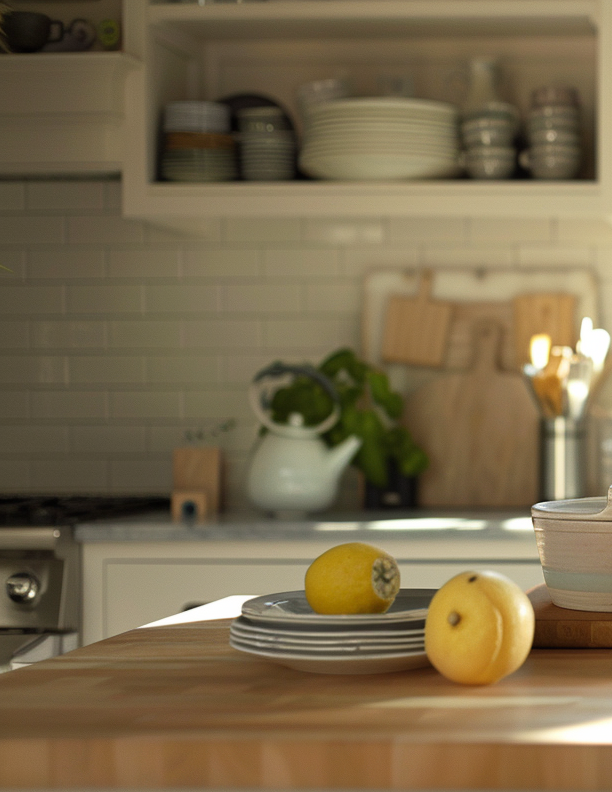
Another pro to using a wood countertop is that some woods, such as pine and oak are naturally anti-bacterial, making them safe and even healthier to cook on. However, it is a type of surface that will require upkeep and maintenance over time. If you aren’t up for periodically oiling your counter or do not want the original countertops to change over time, this may not be the best option for you.

Pros:
- Warm and inviting aesthetic
- Versatile and customizable
- Adds natural beauty to the kitchen
- Anti-bacterial surface
Cons:
- Requires regular maintenance to prevent water spots and stains
- Susceptible to scratches and dents
The Stainless Steel Countertops
For my contemporary and downtown loft vibe lovers, a stainless steel counter is a great choice for you. Stainless steel countertops are favored for their sleek and modern appearance. They are highly durable and resistant to stains, making them an ideal choice for owners who frequently cook.
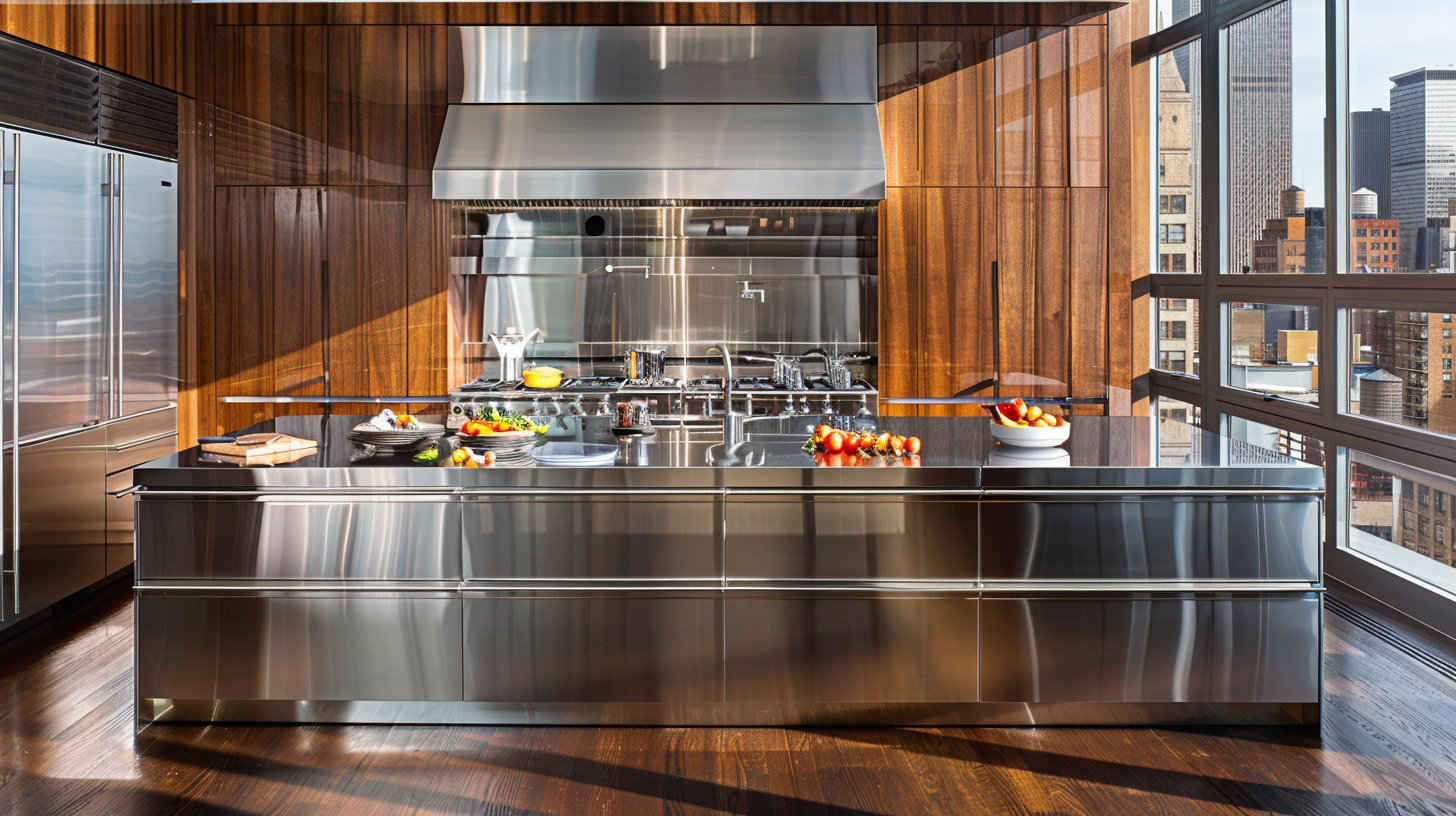
While stainless steel counters are more common in commercial kitchens, nothing stops you from doing them in your contemporary residential kitchen. Some pros of using stainless steel counters are their durability and easy maintenance. It also offers excellent heat resistance and is extremely durable.

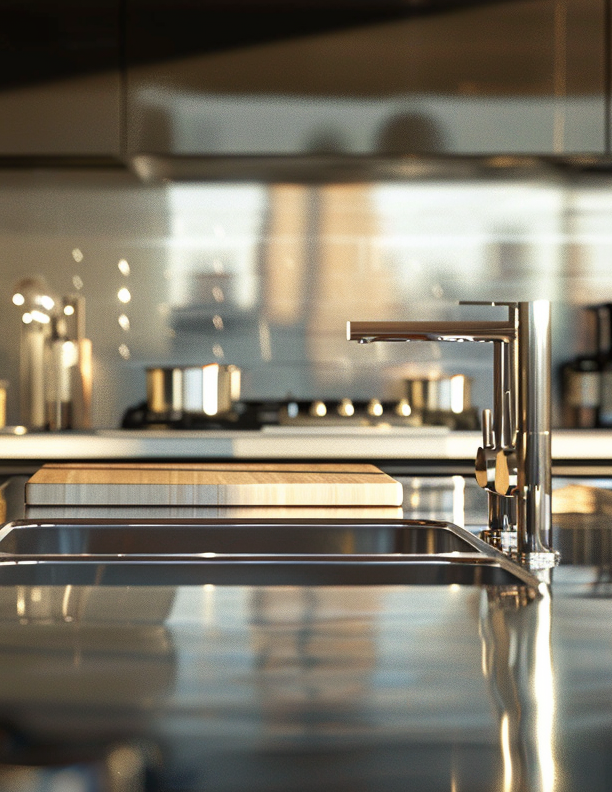
With proper care, your stainless steel counters should look beautiful for years. They can be prone to scratches and fingerprints but even so, they are a great low-maintenance option compared to other countertop finishes on this list.
Pros:
- Sleek and modern aesthetic
- Durable and stain-resistant
- Heat resistant
Cons:
- Prone to scratches and fingerprints
- Can be noisy when items are placed on the surface
The White Concrete Countertops
Concrete is arguably the most used material in the construction industry. In modern-day construction, it is mostly found inside our buildings as a structural material rather than an exterior finish. While there are many striking examples of concrete buildings throughout history, today they are not as popular as they once were in the twentieth century. Some reasons, for this is that concrete is extremely unsustainable, very heavy (which is not great in earthquake-prone areas), and quickly stains in humid and wet climates. Concrete also cracks… a lot. In a word, concrete buildings tend to become ugly, and fast.
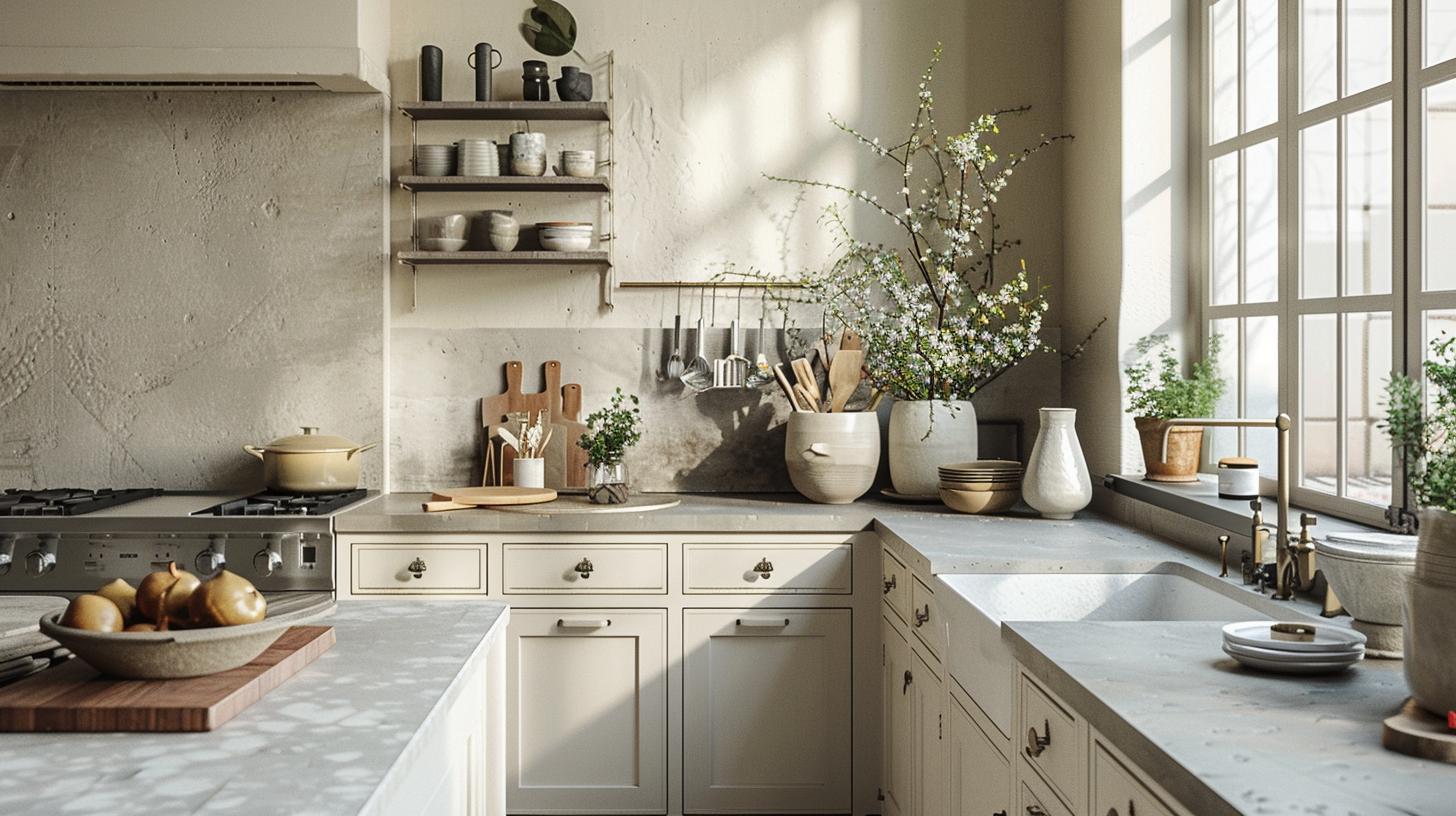
Of course, the countertop concrete version is not the same as the structural or architectural concrete, but a much weaker and more flexible version known as white concrete. As its name suggests, it is a much lighter color than regular concrete. It looks like white stone and has become popular among designers for its timeless look and cost-effectiveness.
However, a lot of the issues regular concrete faces can occur with this one too. Proper sealing is vital, as is properly planning where to add “break lines” to the slab to try to control the eventual cracking as much as possible. I wouldn’t recommend concrete as a countertop finish due to its upkeep and unpredictability. I would opt for a natural stone instead.
Pros:
- Exceptional durability and heat resistance
- more affordable than other counter options
- versatile appearance that works on a wide range of kitchens
Cons:
- Prone to cracking, pour results can look very unpredictable
- Requires proper sealing and maintenance to prevent stains
The Marble Countertop
Marble countertops epitomize luxury with their timeless beauty and unique veining patterns. They add sophistication to any kitchen, making them a favored choice among discerning homeowners. However, Marble is a porous stone making it a fickle material that will change its appearance over time. Marble requires more maintenance to preserve its appearance than other options discussed in this post.
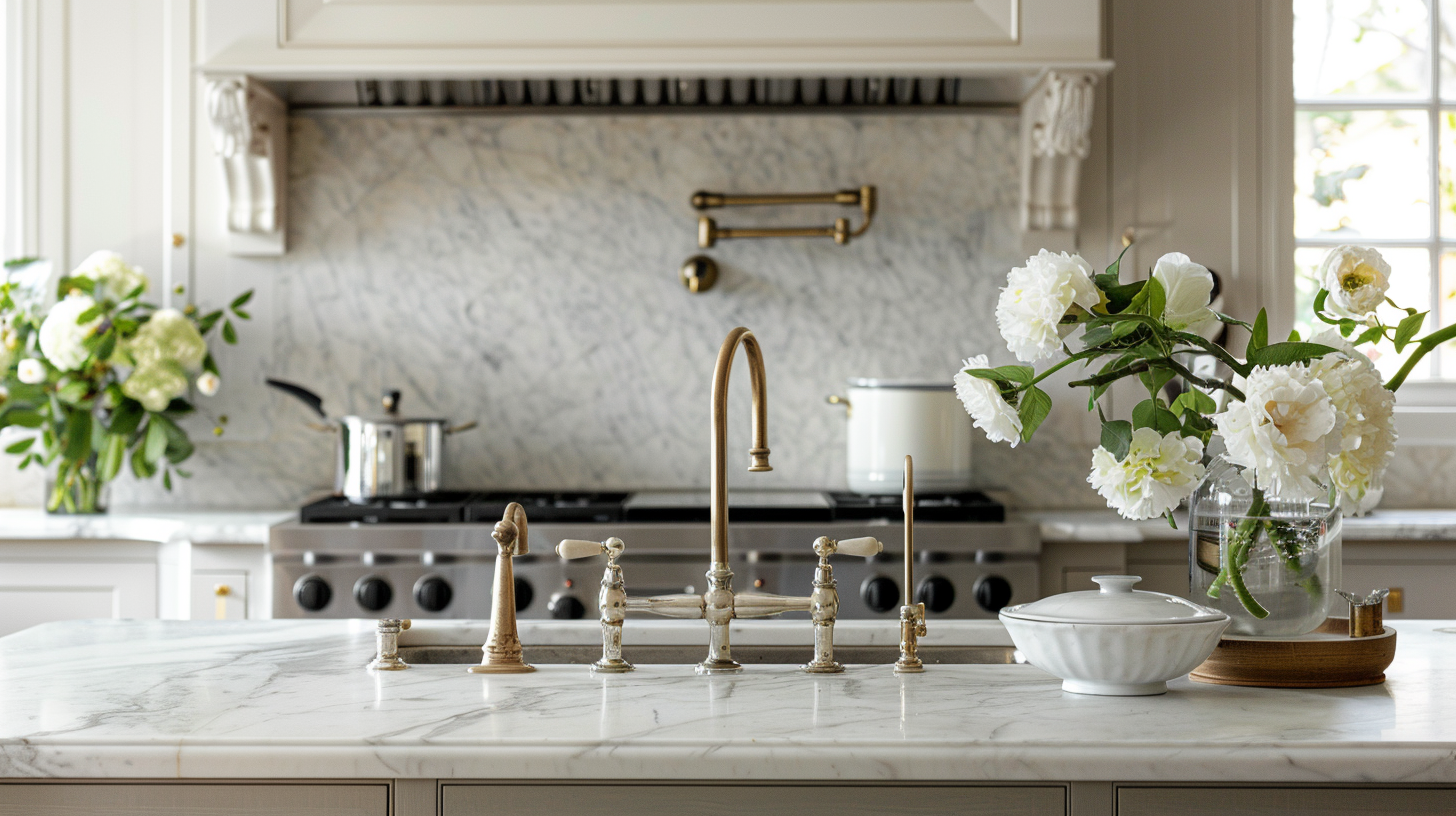
If you pick marble as your countertop finish, you must commit to a frequent sealing regimen to keep it looking good. Even with proper sealing, staining, scratches, and cracking is likely to develop over time. Like white concrete, the way marble ages can be unpredictable, so if you don’t like that “lived-in” feel, marble may not be the right choice for you.
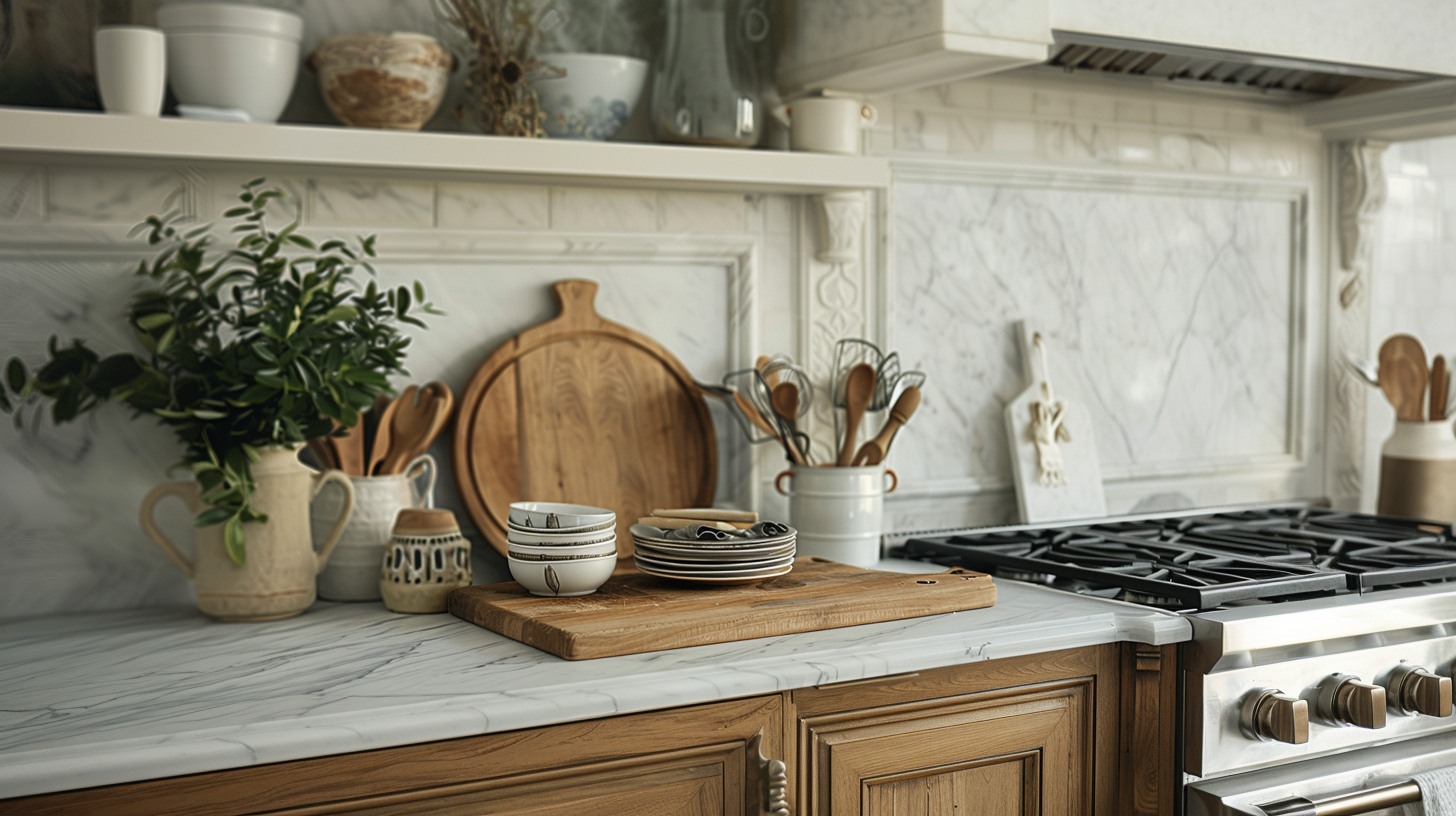
Pros:
- Timeless beauty with unique veining patterns
- Adds sophistication and luxury to the kitchen
- Heat-resistant and durable for long-lasting use
Cons:
- Requires sealing to prevent stains and etching
- Prone to scratches and may require regular maintenance
The Granite Countertop
Granite countertops are a solid option for their durability and natural beauty. They were super popular in the 80s and 90s, which is why many homeowners tend to stay away from it today, but I would argue that granite is still a very versatile option due to the range of colors available.
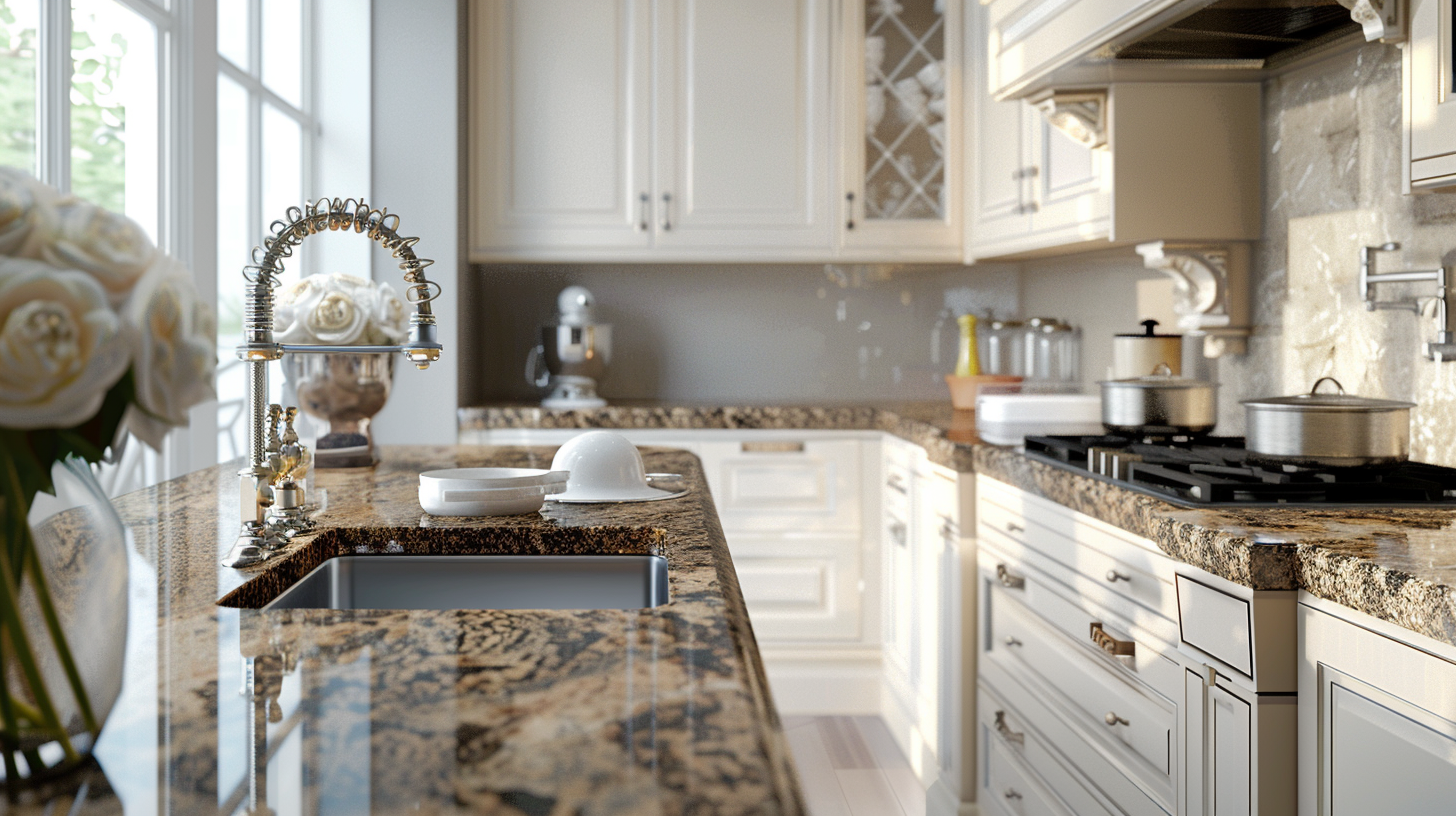
Another consideration when selecting Granite is its weight. Granite is a dense, heavy stone, and this could impact installation costs. Like other natural stones on the list, it is porous and needs to be properly sealed. It can also scratch and form hairline cracks easily. Be sure to get an expert installer who knows how to hide the seams in the stone. It’s the visible seams and poor installation that make granite look cheap and dated.
Granite is great for heat and scratch resistance. With proper care, granite countertops should look great for years to come. I also recommend it because it is one of the more sustainable options on the list.
Pros:
- Exceptional durability and heat resistance
- Wide range of colors and patterns
- Adds elegance and sophistication to the kitchen
Cons:
- Requires sealing to prevent stains and bacteria growth
- May be more expensive than other countertop materials
Quartz Countertops
Quartz countertops are an engineered material that has become extremely popular in the last decade due to its similar appearance to marble and much lower cost. It is also a very low maintenance option and offers a wide range of colors and finishes. Quartz also resistant to most stains and scratches. It is not the best at handling heat, so surface protection from hot pots and pans is a must.
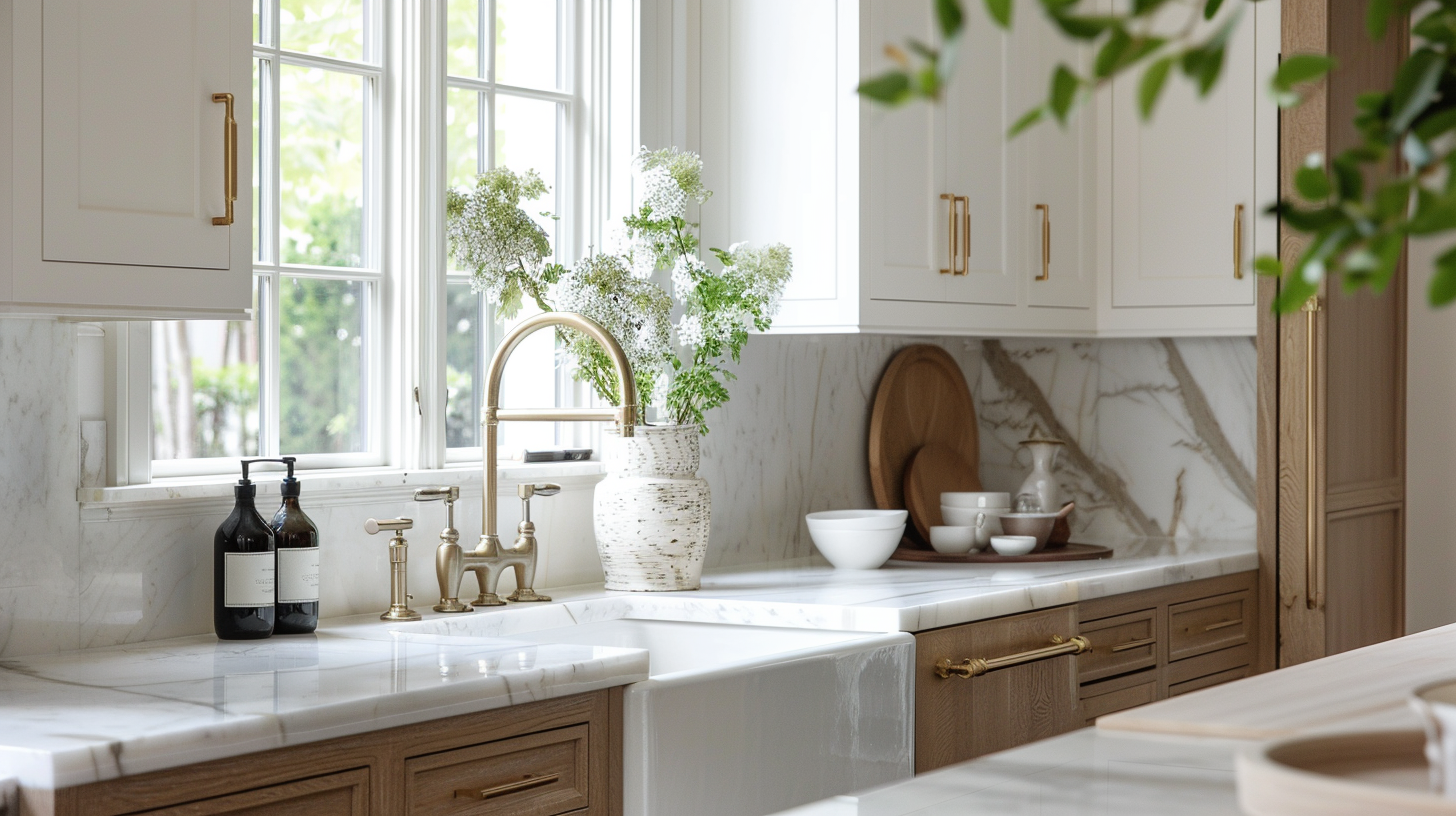
While it may seem like the quartz countertop is one of the best options due to its lower cost and similar marble-like appearance, I have stopped recommending it to clients. The reason for this is that Quartz is extremely toxic to the fabricators that make it, often leading them to develop cancer and other serious respiratory illnesses. It is also unclear if the health risk continues with off-gassing of the finished quartz. I would urge you to look at other more sustainable options that cause less damage to other humans and the environment.
Pros:
- Durable and low-maintenance
- A wide range of colors and patterns are available
- Resistant to stains, scratches, and bacteria growth
Cons:
- May be more expensive than other countertop materials
- Can be sensitive to heat and may require trivets for hot pots and pans
- Highly toxic fabrication process that leads to cancer and other respiratory illnesses
The Quartzite Countertops
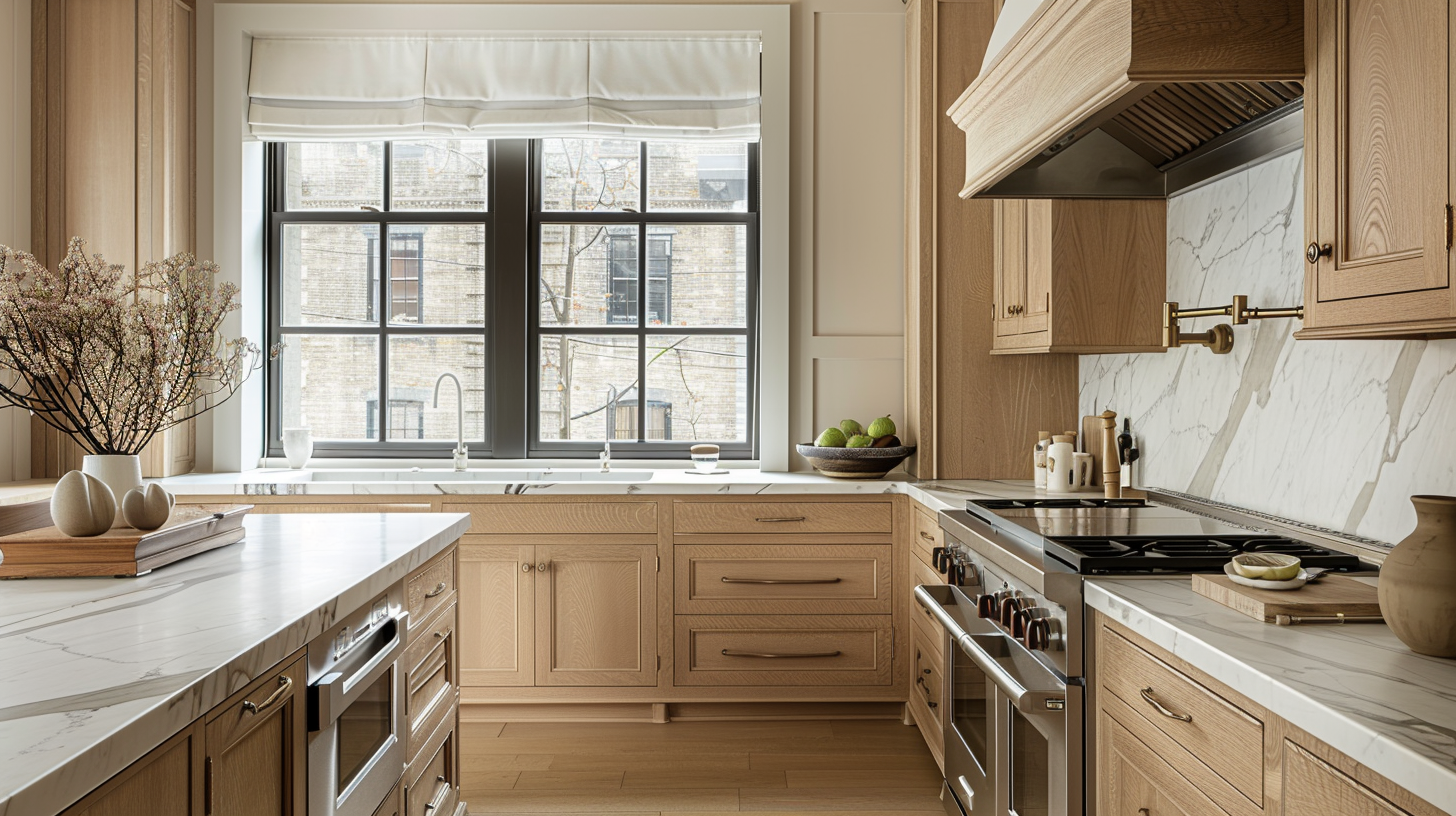
For clients that want Quartz countertops, I steer them towards Quartzite countertops. It’s the perfect option for those who want the look of marble without the high maintenance while getting the color variety of quartz and granite. While not cheap, it is more affordable than marble and has the same unique veining patterns and color variations that make kitchens look one-of-a-kind and elevated.
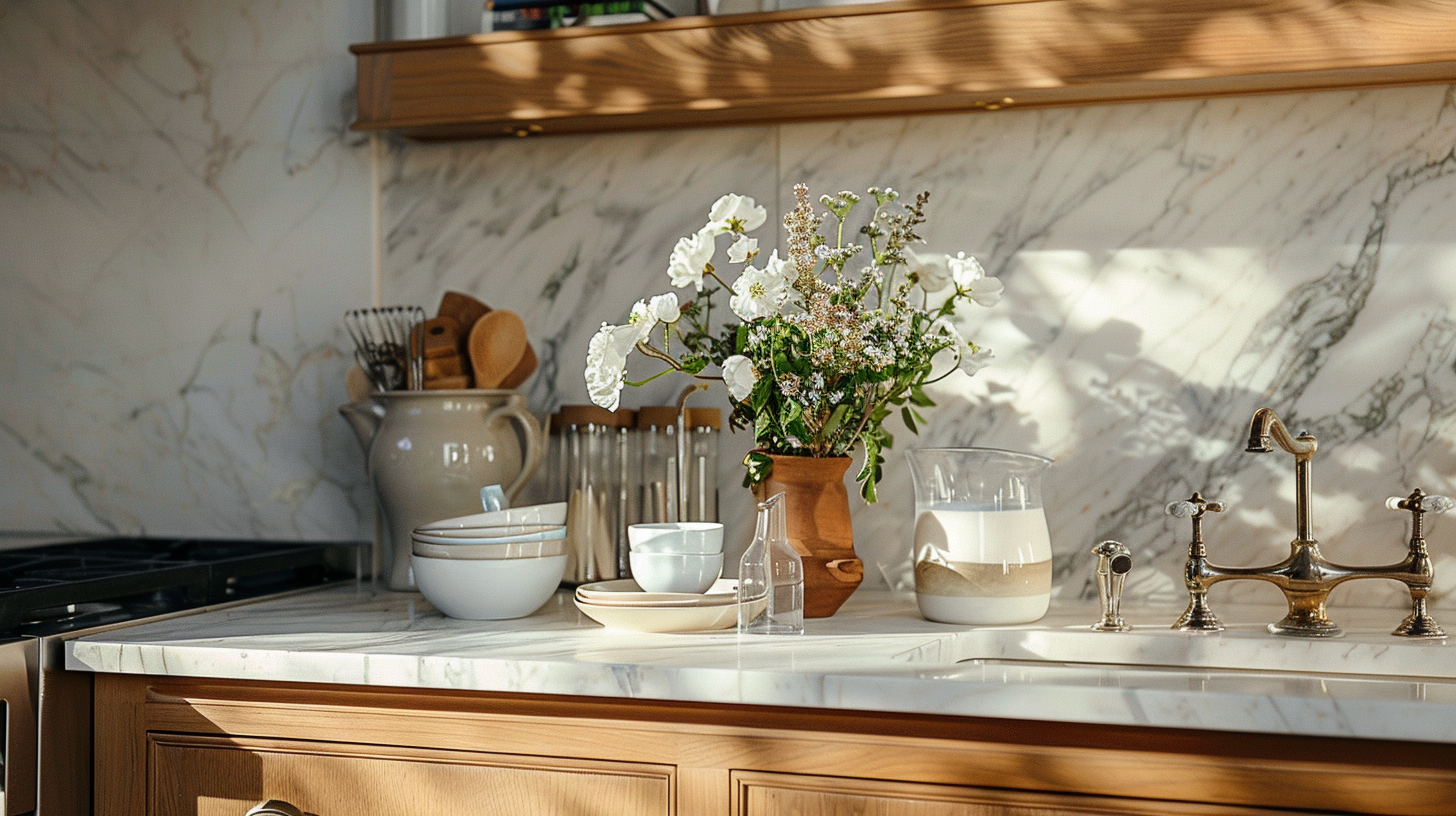
Quartzite offers the elegance of natural stone with exceptional durability and heat resistance. Like other natural stones, proper sealing is a must.
Pros:
- Exceptional durability and heat resistance
- Unique veining patterns and color variations
- Adds elegance and luxury to the kitchen
Cons:
- Requires sealing to prevent stains and etching
- May be more expensive than other countertop materials
Sealing Types: What is best for you?
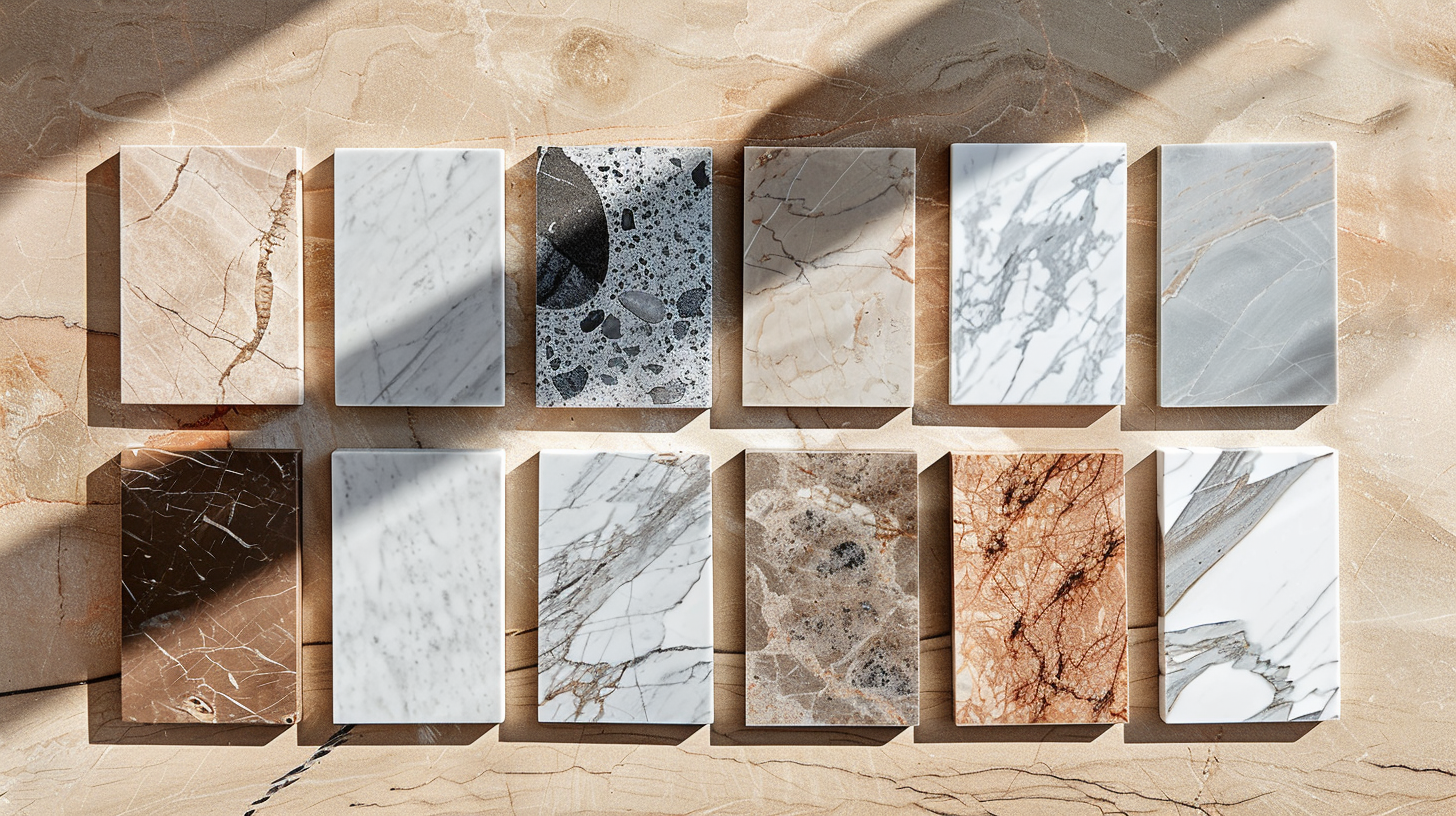
You may have noticed that proper sealing was a running theme of all the countertop finishes previously discussed. Here are a few of the most common sealing types and what the pros and cons are for each one.
1. The all-purpose Polished Finish Countertop
Polished countertop finishes provide a glossy and reflective surface that adds elegance to any kitchen. They are easy to clean and maintain, making them a popular choice for homeowners looking for a low-maintenance option. Polished finishes work well with a wide range of colors and materials to suit various design preferences. They are susceptible to more visible water spots and scratches. Fingerprints will also be more visible.
Pros:
- Elegant and sophisticated appearance
- Easy to clean and maintain
- Wide range of colors and materials
Cons:
- Susceptible to scratches and water spots
- May show fingerprints and smudges more prominently
2. The Leathered Finish, for a lived-in feel
Leathered countertop finishes offer a unique texture and appearance that adds character to the kitchen. They have a matte finish with a slight sheen, creating a sophisticated and modern look. Leathered finishes are less reflective than polished surfaces, making them ideal for homeowners seeking a more subdued aesthetic. Ideal for that, lived-in, cozy feel.
Pros:
- Unique texture and appearance
- Matte finish with a slight sheen
- Less reflective than polished surfaces
Cons:
- May require more maintenance than polished finishes
- Limited color options compared to other finishes
3. For opulence and glamour, the High Gloss Finish
High gloss countertop finishes are known for their shiny and reflective appearance. They create a sleek and contemporary look that can brighten up any kitchen space. High gloss finishes are easy to clean and maintain, making them a practical choice for busy households. They may require resealing from time to time, as the top layer wears off.
Pros:
- Shiny and reflective appearance
- Creates a sleek and contemporary look
- Easy to clean and maintain
Cons:
- Shows fingerprints and smudges more prominently
- May require regular polishing to maintain shine
Choosing the right kitchen countertop finish is essential for achieving the desired look and functionality in your space. If you are struggling with this decision, consider factors such as durability, maintenance, and aesthetic appeal when making your decision. Whether you prefer the warmth of wood countertops or the sleekness of stainless steel, there’s a perfect option out there for you. If you need extra support in finalizing this decision, a designer can help you with this.
I hope this post was helpful to you. If you have any questions, leave a comment below or send me an email or DM on Instagram. Kitchens are one of my favorite things to design, and I would to take a peak at yours.
For more kitchen trends, check out this post on the current architectural design trends. Until next week!


